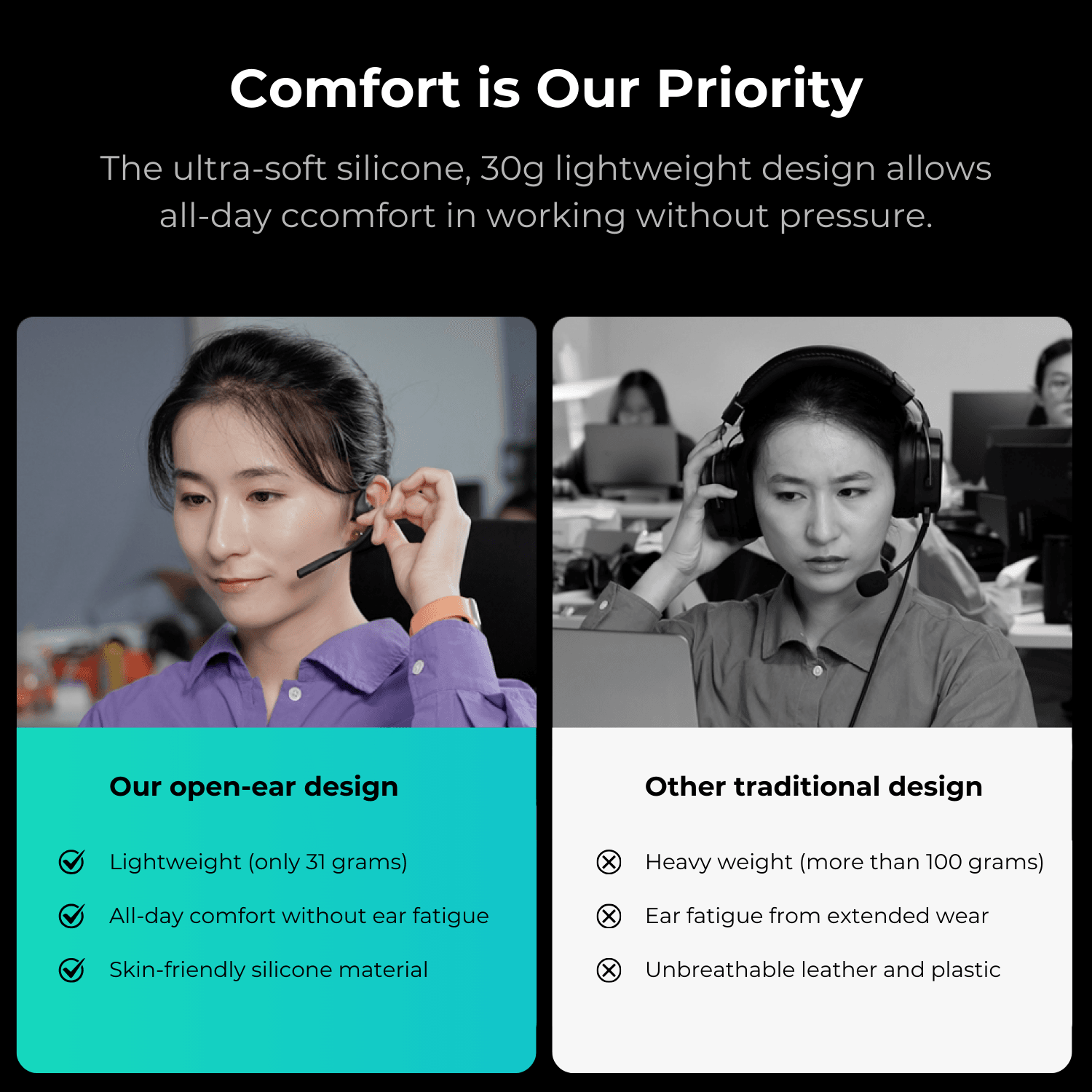Unlock Your Productivity: The Ultimate Guide to Choosing the Perfect Wireless Headset for Your Office
In today’s fast-paced work environment, effective communication is key to productivity. One of the most significant advancements in office technology has been the rise of wireless headsets. These devices not only provide the freedom of movement but also enhance the quality of audio interactions, making them essential tools for remote workers, office employees, and team collaborations alike. As wireless technology continues to evolve, so does its ability to improve our daily work experience. This guide aims to empower you with the knowledge needed to make an informed decision when selecting an office wireless headset, ensuring that you choose a model that aligns with your specific needs and work style.

Understanding Wireless Headset Technology
The technology behind wireless headsets primarily revolves around Bluetooth and, in some cases, other wireless protocols like DECT. Bluetooth, the most common technology, offers versatility and is compatible with a wide range of devices, including computers, smartphones, and tablets. The range of Bluetooth devices typically extends up to 30 feet, allowing users to move freely within their workspace. However, the sound quality and connectivity can vary significantly among different models, influenced by factors such as the Bluetooth version and the codec used. For instance, newer versions of Bluetooth provide better sound quality and lower latency, which is crucial for clear audio during conference calls. Understanding these technical aspects can help you choose a headset that fits your audio needs.
Key Features to Consider
When selecting an office wireless headset, several key features should be at the forefront of your decision-making process. First, sound quality is paramount; look for headsets that offer clear audio without distortion, especially during phone calls. Next, microphone quality is equally important; a noise-canceling microphone can significantly enhance communication by filtering out background noise. Battery life is another critical feature, as a longer battery ensures you can work uninterrupted. Comfort is essential for those who wear headsets for extended periods; consider models with adjustable headbands and cushioned ear pads. Finally, the effective range of the headset can impact your workflow; ensure that it allows you to move around your office without losing connection. Each of these features contributes not only to a better listening experience but also to your overall productivity.
Types of Wireless Headsets for Office Use
There are several types of wireless headsets available, each designed to cater to different preferences and work environments. Over-ear headsets provide excellent sound isolation and comfort, making them ideal for prolonged use in busy office settings. However, they can be bulky and may not be suitable for people who need to stay alert to their surroundings. On-ear models, while more compact, offer a balance between comfort and portability, allowing some ambient sound to filter through. In-ear headsets are the most portable option and are perfect for users who are constantly on the move. They can easily fit into a pocket or bag, but may sacrifice sound quality and comfort for convenience. When choosing the right type, consider your work environment and how much mobility you require during your tasks.
Noise Cancellation and Sound Quality
Noisy office environments can be a significant distraction, making noise cancellation an important feature in a wireless headset. Active noise cancellation (ANC) technology effectively reduces ambient sounds, allowing you to focus on your work or calls without external interruptions. This feature is especially beneficial in open-plan offices or during video conferences where every word counts. Additionally, good sound quality plays a crucial role in ensuring clear communication. Headsets with enhanced audio fidelity can help you hear details in conversations that may be missed with lower-quality devices, leading to better collaboration and fewer misunderstandings. Investing in a headset that prioritizes both noise cancellation and sound quality can dramatically improve your work efficiency.
Budget Considerations
Setting a budget for a wireless headset involves more than just picking a price range; it's about finding a balance between cost and features. While it may be tempting to opt for the cheapest option, investing in a quality headset can save you money in the long run by reducing the need for replacements. Consider what features are essential for your work style and how often you will use the headset. Sometimes, spending a bit more upfront can lead to greater satisfaction and performance. Additionally, keep an eye out for sales or discounts that can help you snag a good deal on a high-quality device without breaking the bank.
Making an Informed Choice
Choosing the right wireless headset for office use is crucial for enhancing productivity and improving your overall work experience. By understanding the technology, key features, types of headsets available, and the importance of noise cancellation and sound quality, you can make an informed decision that aligns with your specific needs. Remember to establish a reasonable budget that reflects both your requirements and the value you place on quality. Take the time to evaluate your preferences and work environment before making a purchase, ensuring that your new headset will serve as a valuable tool in your daily tasks.







